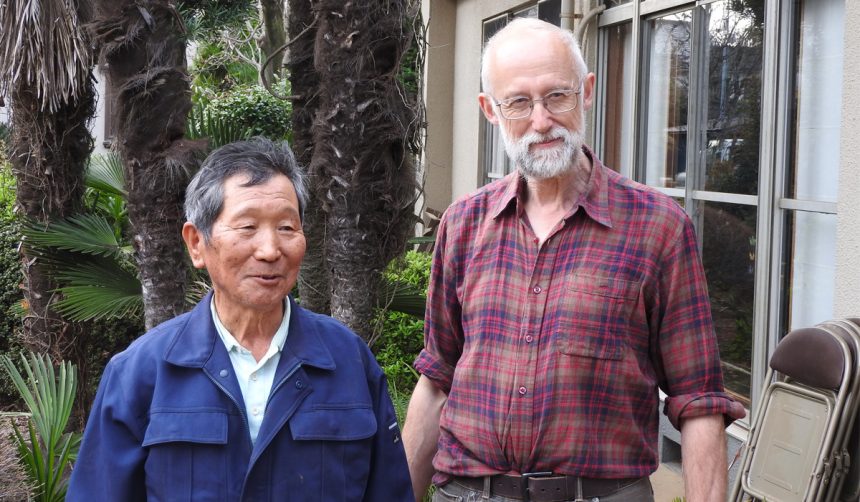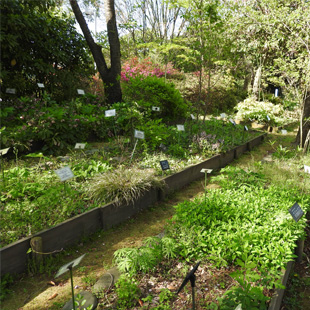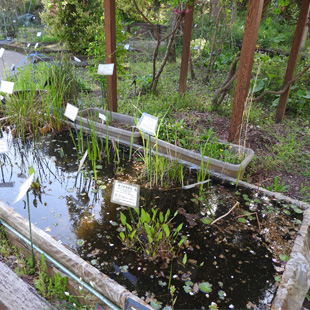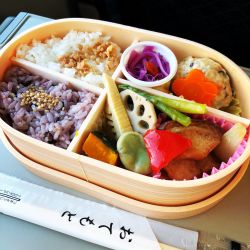
May 31, 2016
More than Cherry Blossoms
Author Stephen Barstow explores the wild side of Japanese gardens
By Joan Bailey
Most people visit Japan in the spring for the cherry blossoms. They come in droves, booking flights and hotels months or even a year in advance. Stephen Barstow, however, isn’t just any garden-variety tourist. Undoubtedly, he wanted to see those delicate pink blossoms; but in reality, he came for the wild vegetables. Barstow recently spoke to Metropolis about a different side to Japanese flora.
“Japan has such a great foraging tradition and so many sansai (mountain vegetables). What I’m really interested in, though, are the cultivated sansai,” says Barstow, a perennial vegetable enthusiast and author of Around the World in 80 Plants (Permanent Publications, 2014).

An ocean wave climatologist in Norway, Barstow spends his free time cultivating edible perennial vegetables. His garden near Malvik boasts more than 2,000 of what he calls “edimentals”—“edible ornamental plants”—and takes two days to tour. It is, he writes, an experiment in climate change and resilience as well as a great deal of delicious fun. This trip to Japan presented the chance to see many of those plants in their native habitat or under cultivation.
For Barstow, perennial vegetables represent a delicious future along with food security. Edimentals, he explains in his book, come back yearly; and require less work, water, and fertilizer than their annual cousins that regularly appear on the table—tomatoes, eggplants, sweet corn, and the like. The perennials are often the plants people think of as weeds, like dandelion, or ornamentals, like that lovely hosta in the front garden. “I take great pleasure in pointing out the edimentals in flower beds and the like,” Barstow states in his book.
Barstow believes that these plants are also an important part of our food history. “Our current vegetables have had these wild ancestors bred out of them,” he says. But that only makes the original versions more interesting for him. “I don’t mean that we necessarily should go back to the wild ancestors. But we should be looking at using some of the useful and nutritious elements of the ancestral varieties and near relatives, in creating new varieties more in tune with our needs, and a future that will be very different.”

Long ago, residents of Japan would have eagerly ventured out into the forest in early spring in search of something fresh and green to supplement their meals or restock their Edo-period medicine cabinet. “There are many excellent new perennial vegetables I’m discovering that are only grown locally or regionally that are perfect for forest gardening—plants like Korean gomchwi (Ligularia fischeri) or Japanese hostas and udo (Aralia cordata),” Barstow explained.
While many in Japan still forage in the mountains and forests in April and May for sansai and edimentals such as warabi, fuki, takenoko, and fern shoots, Barstow divides his travel time between farms, nurseries, and medicinal gardens. Places such as Tokyo’s Metropolitan Medicinal Garden raise thousands of plants used in kanpo (Chinese medicine), while farms, such as those growing wasabi in the mountains or the underground udo caverns in Tachikawa, specialize in one particular kind of plant in common use or much beloved by diners at speciality izakayas. “In the past, most plant-hunting focused on ornamental plants. I guess I’m leading the way of a new generation of edible-plant hunters,” Barstow added with a smile.
Take a walk on the wild side of Japanese gardens at these Tokyo botanical gardens:
Jindai Botanical Gardens Native Plant and Medicinal Garden Section. Open 9:30am-5pm (closed on Mon). ¥250-500. 5-31-10 Jindaiji Motomachi. Nearest station: Mitaka. http://bit.ly/1Vj2irK.
Tokyo Metropolitan Medicinal Plants Garden. Features 1,600 plants on a 30,000 square-meter-site. Free admission. 21-1 Nakajima-cho, Kodaira-shi. Nearest station: Higashiyamato-shi. http://bit.ly/248uRZk.
Meiji College of Phramacy’s Medicinal Garden. Features 2,000 herbs on a 41,000-square-meter site. Free admission. 1432-1 Horinouchi, Hachioji-shi. 9:30am-4pm (closed Sun hols). Nearest station: Hirayamajoshi-koen.
Hoshi University Medicinal Garden. Features 650 herbs on a 3,000-square-meter site. 9am-4:30pm (closed Sun & hols). Free admission. 2-4-41 Ebara, Shinagawa-ku. Nearest station: Togoshigina.







